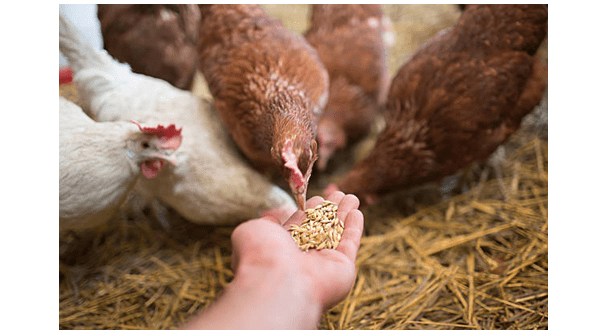A new study has shown that the enzyme mannanase can significantly improve broiler performance in diets containing soybean meal (SBM) under energy-restricted conditions. This finding has important implications for the food and beverage industry, particularly in terms of trade, supply chains, sustainability, and strategic planning.
Enhancing Broiler Performance with Mannanase
Soybean meal is a common protein source in poultry feed, but it contains indigestible compounds like mannans that can hinder nutrient absorption and increase energy loss. Mannanase, an enzyme that breaks down these mannans, can counteract these effects by reducing gut viscosity and improving nutrient uptake. In a recent study, researchers investigated how mannanase interacts with varying levels of SBM in broiler diets under low-energy conditions.
Key Findings and Implications
- Mannanase supplementation improved growth performance, especially at SBM levels of 17.83% and 35.66%.
- Benefits included enhanced body weight, feed conversion ratio, respiratory metabolism, and nitrogen retention.
- At the gut level, mannanase improved protein and amino acid digestibility, reduced gut viscosity, and strengthened intestinal barrier function.
- The enzyme also led to a more stable immune environment in the gut and a shift towards beneficial microbial pathways.
- However, the effectiveness of mannanase was dependent on having sufficient substrate (mannans) to act upon, as benefits were not observed at lower SBM levels.
Strategic Considerations for the Food and Beverage Industry
The use of mannanase in poultry diets containing moderate levels of SBM presents opportunities for feed producers and poultry integrators to optimize performance and sustainability. By strategically incorporating this enzyme, industry professionals can:
- Enhance feed efficiency and reduce costs without compromising growth performance.
- Support bird health and welfare by improving nutrient uptake and gut function.
- Lessen the environmental impact of poultry production by promoting efficient energy use and reducing waste.
Industry Analysis and Outlook
The findings of this study have significant implications for the food and beverage industry at large. As feed producers and poultry integrators adopt mannanase supplementation in their diets, several key trends and considerations may emerge:
- Global Pricing: The demand for mannanase and similar enzymes could increase as producers seek to improve efficiency and sustainability in poultry production. This may impact pricing dynamics in the enzyme market.
- Logistics: Suppliers of mannanase may need to ramp up production to meet growing industry demand, leading to potential supply chain challenges and opportunities for strategic partnerships.
- F&B Planning: Food and beverage companies may need to reassess their ingredient sourcing and formulation strategies to incorporate enzymes like mannanase effectively. This could involve collaboration with feed manufacturers and integrators to ensure optimal performance and sustainability outcomes.
In conclusion, the use of mannanase in poultry diets represents a promising innovation with far-reaching implications for the food and beverage industry. By leveraging this enzyme strategically, industry professionals can improve performance, sustainability, and overall efficiency in poultry production, setting the stage for a more resilient and environmentally conscious supply chain.


